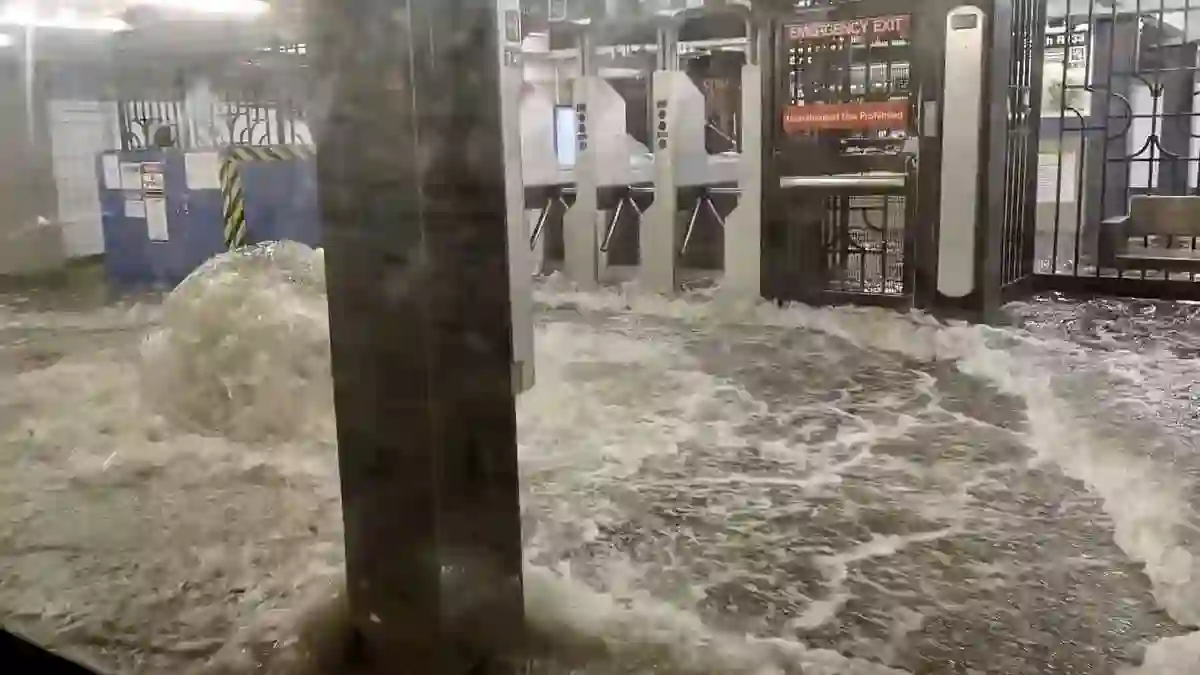Just when New Yorkers thought they’d finally get a break from the relentless summer heat, Mother Nature had other plans.
A powerful series of thunderstorms swept through the Northeast on Monday, turning streets into rivers, halting travel, and triggering a major flood alert across the region.
Heavy Rainfall Turns Streets into Waterways
By Monday evening, the National Weather Service had sounded the alarm, warning that flash floods were already happening across parts of New York City and its surrounding counties.
Reports of heavy rain came in around 5:42 p.m., with estimates showing between one and two inches of rainfall already recorded—and more on the way.
The NWS warned that another one to two inches could fall, which would only worsen the already dangerous conditions.
The deluge has hit several boroughs hard, including Staten Island, Brooklyn, Manhattan, Queens, the Bronx, and even Westchester County.
Airports Disrupted as Travel Chaos Unfolds
With storms battering the city, both JFK and LaGuardia airports reported significant delays for arrivals and departures.
Travelers were stuck waiting for hours, while tarmacs and roadways became slippery and waterlogged.
Across the Hudson, Union County in New Jersey also faced serious threats.
The weather service warned of “life-threatening flooding,” prompting Governor Phil Murphy to act quickly.
New Jersey Declares State of Emergency
In response to the worsening storm, Governor Murphy declared a State of Emergency late Monday night.
“I am declaring a State of Emergency given flash flooding and high levels of rainfall in parts of the state,” he said in a public statement.
“Please stay indoors and avoid unnecessary travel. Stay safe, New Jersey.”
Fifty Million Under Flood Alerts Across the Northeast
The scope of the weather emergency isn’t just limited to New York and New Jersey.
More than 50 million people across the Northeast are now under flood warnings of some kind.
Authorities are urging people not to drive or walk through flooded roads, emphasizing that “most flood deaths occur in vehicles.”
Viral Videos Capture The Devastation
It didn’t take long for videos and photos to start circulating on social media.
Gas stations were swamped, and cars were seen nearly fully submerged.
One particularly dramatic shot by photographer Dan Martland captured a lightning bolt striking the World Trade Center.
In Manhattan, commuters riding the 1 train were caught off guard as floodwaters started pouring into their subway car.
Riders had to climb onto the seats to avoid getting their feet soaked as the train pulled into 23rd Street, water sloshing beneath them.
Authorities Warn: Take Flood Alerts Seriously
The message from emergency services is clear: don’t take chances.
Flash floods happen fast and without much warning.
The weather service urged anyone in low-lying or flood-prone areas to move to higher ground immediately.
“A flash flood is a sudden and violent inundation that can develop within minutes to hours,” the agency warned.
“It can even happen in areas not currently experiencing rainfall.”
Safety Tips for Residents in Flood Zones
If you live in a flood zone or are camping in low-lying areas, the advice is to act quickly.
Secure your home, disconnect appliances and utilities if there’s time, and evacuate as soon as it’s safe.
People are also strongly warned never to wade through floodwaters.
Even six inches of moving water can knock you off your feet—and if the water is electrically charged from exposed wires, it can be deadly.
“If you hear buzzing, crackling, or popping noises or see sparks, get out immediately,” the NWS warned.
“Avoid all standing water with visible wires or cords.”
A Tragic Reminder from Texas
This week’s flooding comes on the heels of a devastating event in Texas, where flash floods claimed the lives of at least 132 people.
More than 100 others are still missing.
It’s a stark reminder of how quickly flooding can turn deadly—and why taking warnings seriously is crucial.
